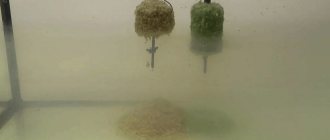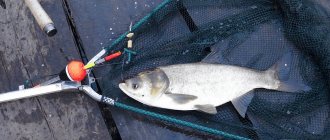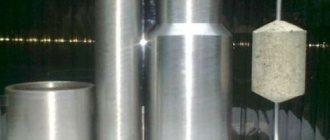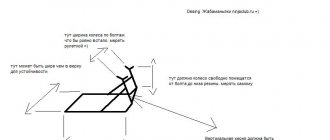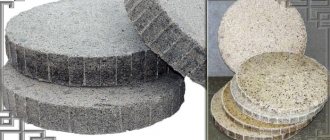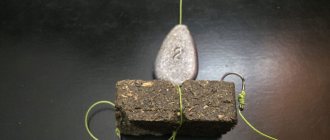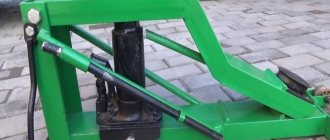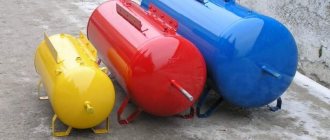Silver carp feed exclusively on plankton
Until recently, catching silver carp with a fishing rod was considered an impossible way to catch it. Fishermen stubbornly sought the key to this elusive fish. Products that were not quite familiar to fishing were used:
- cucumber;
- carrot;
- nettle;
- sorrel;
- clover;
- crushed seaweed.
Components familiar to fishermen were added to this “salad”:
- canned corn;
- steamed peas;
- semolina.
But the real hit among the baits for catching silver carp was technoplankton. This bait is a barrel of pressed food powder. It allows you to fish with a bottom or float rod.
Bottom fishing for silver carp (at depth)
First of all, when it comes to tackle for silver carp, it should be noted that it must be very durable.
Some specimens of silver carp can reach 30 kilograms. The gear used for catching silver carp is as follows:
- A rod measuring from 3.5 to 4.2 m.
- The reel must be inertia-free with a friction brake to reduce the resistance of the fish.
- We use fishing line 0.22-0.4.
- Hooks are selected depending on the expected size of the silver carp, but you should not use too small ones.
The main element of the equipment is the spring. This spring is clogged with bait, and you need to put pieces of foam on the hooks. This will help create good buoyancy in the leash. After the tackle hits the water, the foam swells and floats above the spring. Usually there should be no more than three leashes. The length of the leashes should be between 5 and 7 cm.
Plankton fishing
Relatively recently, fishermen had the opportunity to fish for technoplankton. In this case, it is necessary to use special equipment, which uses a sliding sinker and a barrel with technoplankton. Technoplankton dissolves in water and forms a cloudy cloud that attracts silver carp.
When fishing with plankton, the leashes float above the cloud, and this allows the silver carp to be hooked. Technoplankton contains special components that increase the appetite of fish.
In order to fish with technoplankton, you need to put foam on the hooks. This fishing method implies that the silver carp comes up to filter the clouds that have formed and is hooked. This type of gear produces pretty good results. And on some days your catch will be very significant.
Fishing with porridge
When fishing for silver carp, you can use springs and porridge to fill
It can be anything, but it is important to add at least one of these elements to it:
- Semolina.
- Vanillin.
- Cookie crumbs.
- Bran.
- Honey, etc.
This will help add additional taste and smell to the porridge, and therefore will better attract silver carp. The porridge also creates a cloudy cloud in the water, which, due to the consistency of the porridge, will remain stable in the water.
Lure
When preparing bait, you should remember that silver carp does not like strong odors. Here are some proven recipes:
One kilogram of peas needs to be boiled over low heat to make a puree. Then, while stirring, you need to add 100 grams of milk powder and half a kilogram of semolina. Stir until a very sticky consistency is formed.
It is important that the peas do not burn, this will have a negative effect. Prepare equal proportions of the following ingredients: Powdered milk
Breadcrumbs. Cake. A couple of pinches of dill
We prepare equal proportions of the following ingredients: Powdered milk. Breadcrumbs. Cake. A couple of pinches of dill.
Mix the above ingredients in one bowl. Prepare water in which you need to put a teaspoon of soda and citric acid. Then little by little add the resulting liquid into the container. Mix until you get a thick consistency.
We fill the spring with the finished porridge and throw it in. It is necessary to take into account that the porridge needs to be changed after each cast. This will increase the attractiveness of the resulting cloud after each cast.
When bottom fishing for silver carp, there are some nuances that are important for the fisherman to know:
- Silver carp is a rather finicky fish. Therefore, he may peck one day and not the next. If you decide to hunt silver carp, then at the same time fish for other fish. This will help you not to be left without a catch if something happens.
- Before casting the tackle, be sure to fill the feeder with bait and put foam on the hooks. If this is not done, then such fishing is impractical.
- Try to throw in the same place. This will help you feed a large number of fish in one place.
- You need to choose a place where there will be no coastal bushes, floating trees, snags, etc.
- If you use technoplankton for fishing, cover the leashes with bread crumbs. This will allow them not to get confused during the flight. In water, the bread will simply become soggy and fall off, and the leashes will level out.
Technoplankton Recipes
For fishermen who want to experiment with homemade baits, below is one recipe for making technoplankton yourself at home:
- in equal quantities ; the recommended volume is half a kilogram of each ingredient.
- About 300 g is poured into the mixture. breadcrumbs and the same amount of steeply brewed porridge, which is prepared on the basis of corn flour.
- 300 g is added as an additional sweetener and flavoring vanilla sugar.
- All components must be thoroughly mixed to obtain a homogeneous mass.
- To give the mixture the necessary structure , it will need to be soaked with a small amount of water, to which you can first add honey, it will increase the catchability of the resulting bait.
There is also an alternative recipe for preparing technoplankton, the main component of which is condensed milk.
To obtain such bait, you must use the following algorithm of actions:
- into a separate container at once.
- Mix the condensed milk with a mixer , which is set to medium-speed revolutions; at the same time, dry powder-type cake and powdered milk are added to it. The amount of ingredients used must be equal.
- The resulting mass must be mixed until its structure begins to resemble fairly thick sour cream.
- Without removing the mass from the container in which it was prepared, you need to place it in the freezer and keep it there for about 30 minutes.
- After the specified period, the mixture is taken out of the refrigerator and kneaded by hand until the structure resembles dough. If the bait does not acquire the required shape, then in parallel you can add small quantities of dry ingredients that have already been used previously.
- The last component is added to the dough-like mass - half a kilogram of breadcrumbs, after which the mixture is thoroughly mixed again.
- Further actions depend on how you plan to use this bait. Technoplankton can be compressed or left in its original form, then it will sink into the reservoir while in the feeder.
https://www.youtube.com/watch?v=bwwxdzWteSw
Do-it-yourself technoplankton: what is needed to make it?
At the moment, technoplankton is produced at home in two ways:
- Power pressing of the mixture in a special metal mold without heat treatment.
- Baking the composition lightly pressed in a plastic mold in the microwave.
The second option is much more affordable, because the material for making molds is much easier to find.
In fact, any plastic tube of the required diameter (about 3.5 cm) is suitable for making technoplankton.
You also need to make a plug and a piston that will compress the mixture inside the tube. The easiest option is to use a 20 cc syringe as a plastic mold.
Manufacturing process:
- The raw materials are poured into the mold, then a piston is inserted into it, and the mixture is compressed with a slight force.
- Then, the mold is placed in the microwave for 7-10 seconds, after which the raw materials are finally compressed using a piston, and the entire structure is sent into the microwave for 25-30 seconds.
- After this, you can remove the ready-made technoplankton outside.
If you want to seriously engage in the production of the bait in question in large quantities, it is better to abandon the method described above in favor of the cold pressing method in a special metal mold.
A drawing of a homemade mold with dimensions can be easily found in the public domain. Here is one of them:
It is unlikely that it will be possible to make a normal metal press mold from scrap materials. Therefore, you will have to turn to a familiar turner for help. You can do it even simpler and buy a ready-made mold.
Read Zherekh
Now there are many such offers on the Internet. The price of the mold ranges from 600-1000 rubles. Approximately the same amount is spent for one fishing trip with industrial technoplankton...
To press the mixture without subsequent baking, you need to create high pressure. As a press, you can use a hydraulic or mechanical jack, which will compress a special metal frame.
But, in my opinion, the easiest way is to purchase a large mounting clamp and use it as a press.
What is the best way to feed?
The composition of baits for silver carp can be very diverse. Despite the fact that in natural conditions this fish feeds mainly on algae, silver carp have long been interested in various porridges. Before use, porridges must be prepared according to special recipes.
Pea groundbait
To cook peas you will need a saucepan with a capacity of up to 5 liters. Feeding will require a large amount of mixture, so you need to cook at least 1-1.5 kg of peas. Cook over low heat for about 4 hours.
It is necessary to add semolina to the finished broth until the mixture has a viscous consistency. The resulting composition must be carefully mixed with your hands. It is best to do this in a large basin. This mixture may also appeal to other fish of the carp family, so the tackle must be strong enough.
Milk groundbait
To prepare this bait we will need:
- 700 g flour;
- 700 g wheat bran;
- 700 g milk powder;
- 30 g potato starch;
- 1 teaspoon vanilla sugar.
The mixture is prepared in several vessels. Each of the main ingredients should be cooked separately until a sufficiently viscous mixture is obtained.
After preparation, all components should be combined and brought to a homogeneous consistency. On the shore, part of the bait must be combined with sand or clay. This will allow the bait balls to deteriorate more slowly, and it will be more difficult for silver carp to eat the bait. The rest of the bait is used to charge the feeders.
Groundbait with breadcrumbs and flour
The love of carp fish for sunflower oil has been known for a long time. Adding a few spoons to the mixture can significantly increase the frequency of bites, but it is best to use waste from the production of sunflower oil.
Sunflower cake is perfect for these purposes. Breadcrumbs and milk powder should also be added to the groundbait mixture. The presence of milk powder in many formulas is explained by the high content of milk protein.
To prepare the mixture you will need:
- 1 kg of flour;
- 0.5 kg of ground crackers;
- 0.5 kg of milk powder.
Since there are no cereals in the composition, there is no need to cook anything. It is necessary to carefully bring everything to the desired consistency and leave for several hours. It is best to use this bait in feeders, and feed the fishing zone with pea bait.
How to properly catch silver carp killer tackle
The best time to catch silver carp is from early morning until lunchtime. Sometimes he can feed intensively for a couple of hours in the evening. Having chosen a promising fishing point and prepared a place on the shore to install the gear, they load the feeder with bait or use technoplankton as bait.
Non-massive rigs are cast with a rod. Having made the cast, the cord is tightened using a reel, and the tackle is placed on the signaling device and awaits the approach of the trophy. In the absence of fish activity, the feeder is recharged with complementary foods every 2–3 hours. A float placed on its side, signaling the emptyness of the feeder, will allow you to visually determine the lack of complementary foods. On subsequent casts, the fishing horizons are changed. As a rule, the first casts are made into the water column about one meter from the surface, each time increasing the depth for the next cast by exactly a meter. As a result of a distinct bite, during which the fishing line is pulled together, the so-called steam locomotive in the fishing community, the fisherman immediately begins to fish. Hooking is not required when fishing for silver carp; in almost all cases, the fish are caught on their own.
Fishing requires a lot of effort and constant control of the tension of the cord, which should release only as a result of the operation of the clutch. It is recommended to use a hook instead of a landing net. After all, a silver carp catch of 30–40 kilograms is not uncommon, and given the size of such a fish, a landing net will not always be at hand.
Fishing for silver carp from the surface using technoplankton and porridge using the Silver Carp Killer
Silver carp fishing is a very interesting topic. Surely, every angler has seen incredibly powerful splashes of this large fish at paid rates, and on clear days, when the sun warms up well and illuminates the water, you can easily notice whole schools of large silhouettes of silver carp. Yes, indeed - silver carp reaches incredibly large sizes - up to 70 kg. This is quite possible in large reservoirs or rivers in which it lives. Of course, in small paid bets it is unlikely to reach this size, but individuals weighing 10 kg are far from the limit. But who knows how to catch silver carp? Nowadays, silver carp fishing is only gaining momentum and the myths about catching it with algae, reeds, berries and other interesting things are slowly moving back and starting to make more or less experienced fishermen smile.
A silver carp weighing 1.5 kg is considered small, which is a very decent result for an angler who is used to catching crucian carp from the palm of his hand. Therefore, all anglers hunting for catching relatively small fish are beginning to become interested in catching silver carp, and maybe they have already asked more experienced colleagues or even tried to catch this giant themselves. But who really knows how to catch silver carp and who managed to pull out at least one specimen of such a fish? The answer is units. I began to be a little embarrassed by the fact that very few people know how to catch silver carp, although there is nothing difficult about it. Everyone to whom I explained how to catch silver carp had a catch on the very next fishing trip. Why don't others try it? I decided to correct this situation and teach everyone who visits my website how to catch silver carp!
☸ Tackle for fishing with technoplankton
The set of float and bottom gear for silver carp fishing is approximately the same, the only difference is the presence of a float in the first and some differences in the assembly of the equipment. Typically the kit consists of:
- a durable fishing rod up to 4.2 m long, capable of withstanding landing trophy fish;
- a powerful reel with a spool size of 4000-5000, equipped with a friction clutch and a baitrunner;
- monofilament with a thickness of 0.25-0.35 mm (stock of at least 100 meters);
- a clearly visible barrel-shaped float (for a float fishing rod);
- sinker, which is selected depending on where it will be mounted, on the main line or on the equipment (in bottom fishing, an element such as a feeder weight is more often used);
- one or more hooks commensurate with the object being fished;
- trempel (silver carp sticks) - a special triangular device with ears for leashes and a pin for pressed plankton.
Equipment
To assemble the equipment, a special device called a silver carp stick or “trempel” is required. This triangular structure made of metal wire or rigid plastic has a pin onto which pressed technoplankton is placed. Leashes and the main fishing line are mounted to the ears of the silver carp stick.
Bottom equipment
This is what a feeding weight for technoplankton looks like. A
is mounted to the main fishing line of the tackle behind the central eye. Leashes with hooks are attached to the other two ears, on which foam plastic is baited. The technoplankton is mounted on the trempel pin and the barrel is secured with a rubber tube stopper. If necessary, you can attach a third leash here.
Float equipment
The main line is passed through an anti-twist feeder tube. A “blind” sinker is tied to the end of the fishing line. A float is threaded onto the top of the tube, and a leash with a “trempel” is mounted to the mount. The silver carp stick is equipped in the same way as in the case of bottom equipment. The difference is that there are no foam balls on the hooks. And the length of the leashes is selected so that the hooks are located 5-15 cm below the barrel of powder.
Equipment equipment
The kit for making tackle for silver carp includes the following components:
- strong rod. It can reach up to 5 m in length;
- multiplier inertial coil;
- monofilament line;
- a cone-type or egg-shaped float with a load capacity of up to 60 g. It is advisable to choose a float that is equipped with a keel to avoid fluctuations in the bait when there is wind;
- medium sized rubber stoppers. Thanks to them, it is possible to adjust the depth of hooks immersed in water, as well as complementary foods;
- plastic bead. It must have a fairly significant circumference in order to provide a stopper for the float at the time of opening;
- damper in the form of a rubber bead. It is necessary to protect the site of the knot so that there are no breakthroughs when the heavy float hits when casting;
- swivel with fishing line. Its length should be no more than half a meter. It is necessary in order to eliminate situations where hooks may get caught on the equipment. Also, thanks to them, displacement of the float and sinker will be prevented;
- olive. This is a sinker that is necessary for loading the float, and, in addition, for making adjustments and correct placement of the bait when it is lowered into the water;
- a T-shaped trample, having an oblong rod and complemented by three rings with a fishing line attached to the upper end, and a leash with hooks attached to the other two;
- elastic leashes of high strength, which must be woven from threads or fluorocarbon. Their thickness should be 0.18 mm and their length no more than 7 cm.
- Hooks from No. 8-12. They will provide a solid hook on the fish. The silver carp has very sensitive receptors in its mouth. When a silver carp is pricked by a hook, it can simply spit it out, and as a result the fish will break off.
Design of bottom tackle for silver carp
The design of equipment intended for catching silver carp is made of metal elements. Most often, knitting needles are used or wire is used. At the moment you can find gear that is equipped with threads for technoplankton. In terms of design, the tackle can be bottom or float.
When making bottom equipment for catching silver carp with an elastic band, an important element is a spring, which is equipped with technoplankton. When installing equipment, it is necessary that it be powerful enough. The weight of silver carp can reach up to 35 kg. If a fisherman’s tackle is weak, then it simply won’t support such a big fish. When making tackle for catching silver carp with an elastic band, 3 leashes are used, each of which is 7 cm long. In addition, a spring is used as the main element.
Float rigs cannot do without the use of a sinker and a large float, which is necessary to hold the rig on the water in one place. The float gear is equipped quite quickly. However, when assembled, it has a rather bulky appearance. This is its main disadvantage.
Features of bottom equipment for silver carp
The average weight of silver carp varies between 25–35 kg. For this reason, a fisherman's rod must be quite strong to ensure successful fishing.
For donkey, the process of making equipment is as follows:
- the sliding sinker is attached to the main line using a limit stop;
- a stick is tied to the end of the fishing line of the central eye;
- leashes are mounted to the two remaining ears;
- Styrofoam balls are placed on the hooks. This is necessary to avoid the rig lying down when it reaches the bottom;
- Rubber tubes attach the bait to the pin.
Read How to determine the age of a fish
Bottom equipment is quite suitable for catching silver carp, provided it is used correctly
It allows you to ensure a good catch, even taking into account the fact that the structural features of the jaws of silver carp prevent the rise of food located at the bottom
In order for fishing to be successful, you should choose powerful tackle that can withstand weight up to 36 kg
When installing the equipment, the angler must pay special attention to the spring. It must be filled with feed that has a viscous consistency. Styrofoam balls must match the size of the hooks to ensure they float
The foam balls must fit the size of the hooks to ensure they float.
When the hooks are again at the bottom, they will be raised by the floats along the spring to the top of the leashes, the length of which is 7 cm. Thus, it is the hooks that the fish that are located above the bait located at the very bottom of the reservoir will grab.
Silver carp: description and behavioral characteristics
The main habitat of silver carp is considered to be the Amur River basin. In the European part of Russia, this fish appeared relatively late.
The silver carp was unable to fully acclimatize, so the population is replenished by individuals grown in vitro. The body of the silver carp is oblong and wide, covered along its entire length with small silvery husks. This species of fish has an unusually wide head and eyes that are located below the midline.
The mouth is quite large and directed upward. Fused gill rakers allow water to be filtered. The lines of the fins converge at sharp angles. Silver carp reaches a length of more than 1 meter and a weight of 50 kilograms. Spawning occurs in late spring or early summer at a temperature of +18.
A female silver carp can lay up to 500 thousand eggs. Old individuals are rather clumsy and often suffer from obesity. On hot days, silver carp come to the shore in large flocks, or swim in the upper layers of the water.
The diet of young individuals is dominated by zooplankton, while that of adults is dominated by phytoplankton. However, silver carp can eat almost any plant food, and sometimes of animal origin. It is not uncommon to catch large silver carp using bait for predatory fish.
Fishing techniques and tactics: tips and tricks
One of the fishing tricks when catching silver carp is to camouflage the hook with pieces of algae. As a rule, the fishing line tightens when bitten, after which it noticeably weakens and tightens again. This is what happens: he greedily swallows the bait and tries to hide with the prey from his relatives. This maneuver leads to the fish hooking itself. But if the sting of the hook is not sharp, after being pricked, the silver carp will spit out the hook and leave the troubled place along with its fellow tribesmen. That is, you need to hook it at the moment when the line is stretched for the first time.
If the moment of first tension of the line is missed, the further outcome of events depends not so much on the fisherman, but on his potential catch. After he makes the first jerk, he freezes, as if assessing what happened. If he suspected something, there would simply be no jerk a second time. In the opposite situation, the matter will most likely end in self-cutting. However, with any of the options, the first pull of the fishing line will tell the angler that it is time for a fight.
Once hooked, the fish will immediately put up serious resistance. At the same time, he will definitely do crazy things. After the first jerk, feeling the pain from the sting of the hook, the silver carp will try to hide somewhere in the thickets. If this succeeds, the fisherman is unlikely to be able to seduce him with bait again.
Biting calendar by fishing season
In each season of the year, silver carp behaves in a special way, and it is important for anglers to know the biting time in order for fishing to be enjoyable:
- Spring - the waters are filled with dendrite and algae and the silver carp begins to look for food. It is still at the bottom and only when the water warms up to +25°C does it move closer to the surface, starting to feed intensively and greedily grab any bait. At the end of May, silver carp spawn and bite well on artificial pieces of foam rubber, foam balls and even a cigarette filter.
- Summer , after the end of spawning closer to July, you can also go fishing to catch large silver carp. The bite is successful with any bait.
- Autumn. Until October, you can catch some good trophies, while there are a lot of different insects and vegetation in the area.
When the temperature drops below +8°C at the end of October, the fish begins to accumulate fat reserves to feed for the winter and the bite is quite successful on any microorganisms, plankton, which the fish greedily swallows along with the hook. The main thing is to maintain silence and camouflage when arriving at the reservoir. Silver carp are shy and cautious. If you startle them, they will immediately go into the depths of the waters and may never return. - Winter. There is practically no bite, the fish sleeps, sinking to the bottom. It prefers to sleep, and there is no bite at this time until the ice begins to melt.
When to catch silver carp
What time of year to fish
- The best time of year for catching silver carp is summer. During this period he is especially active. The number of bites will be especially high during the spawning period. At this time, he is especially hungry and will try to eat more. Don't be surprised if the bites happen one after another.
- Usually the best time for biting is considered to be early morning and evening. However, in some reservoirs the bites may not stop throughout the whole day.
- Already in September, silver carp stops pecking and behaves passively. Every bite at this time is worth its weight in gold. So try to do everything right.
- In winter, silver carp are not caught. At this time, it goes deep to the bottom and buries itself in the silt.
What time of day to fish, features of fishing at different times of day
- It is best to catch silver carp in the morning and evening. At this time of day, the silver carp is looking for food. Therefore, it is best that before this time your gear is already in the water. In this case, your chances of getting a bite increase.
- During the day, the fish usually go to the bottom, and at night, silver carp bites occur very rarely. But you shouldn't neglect this. Leave one “silver carp killer” in the water.
Choosing a fishing spot
It is best to catch silver carp in those places where it was launched a long time ago. This fish usually stays far from the shore: even in the morning and evening it does not come within 20-30 meters.
Bait and groundbait
Technoplankton is still the favorite in silver carp fishing. You have to buy bait in stores, but the pleasure you get from fishing is worth the money spent. The powder contains various flavoring and appetite-inducing substances. All this is complemented by flavorings. There are many varieties of baits available, allowing you to choose the optimal scent. These are scents such as:
- original;
- bloodworm;
- honey;
- strawberries;
- blood;
- anise;
- raspberries;
- vanilla, etc.
However, some fishermen are trying to counter the monopoly of technoplankton with their own recipes. So far they are suitable only in some specific and well-studied bodies of water. The main magical property of technoplankton barrels is the slow soaking of the bait in the water. The result is an attractive and flavorful food stain. Thus, a barrel of technoplankton becomes both bait and groundbait.
Catching grass carp on a feeder - a detailed guide to making equipment and choosing bait with groundbait.
Carp are most often found in the same reservoir with silver carp; learn about the technique of catching this strong and beautiful fish in the article about float fishing for carp.
A large and detailed article on rigging a float rod yourself.
Equipment and arrangement of float gear
Technoplankton itself is very hard; it cannot be driven into the feeder like regular bait. For its installation, they came up with a special wire structure, similar to a trempel.
Technoplankton is put on a wire rod, hooks connected by leads with wire “ears” cling to the edge of the bait.
Next, the fully equipped trempel is tied to the main line and thrown into the water. The technoplankton gets wet and a cloud of turbidity forms around it.
The silver carp approaches the bait, begins to suck it, the hooks fall into its mouth, dig into the soft tissue, and the fish hooks itself. This rig is often called the “head killer” due to its exceptional effectiveness.
Tramps for catching lobato can be purchased at some fishing stores. But they are also easy to make with your own hands.
They are made from ordinary bicycle spokes. The needlework process does not take much time; the necessary tools can be found in every home. I suggest you familiarize yourself with the detailed photo manufacturing instructions.
The leashes are knitted by hand, from soft braided fishing line, with a diameter of 0.18-0.2 mm.
Hooks must have exceptional sharpness and not break or unbend when fished. I can personally recommend using self-hooking hooks GAMAKATSU LS-3513 No. 2 from Gamakatsu.
Now let's talk about the design of the float tackle. The figure below schematically shows the layout of all its elements.
The fact is that for catching silver carp, very large floats are used, with a carrying capacity of 40 to 100 grams, with long antennas and voluminous bodies.
Such floats sail very strongly, so the equipment will constantly be blown away, even with a slight wind.
A sliding sinker weighing 30-50 grams works like an anchor, holding the entire equipment at one point.
The through hole in the weight must be large in diameter so that the stopper can easily pass through it.
An olive weight near the trempel with technoplankton serves as a weight for the float. Weight is selected empirically.
Read Silver carp: benefits and harmsIt must be such that, together with the weight of the empty tram, it provides the float with an inclined position on the water. With technoplankton on the rod, the float should stand vertically.
This setting makes it possible to track the moment when the bait becomes completely limp and you need to replace the “tablet” with a new one.
Habitats
Silver carp prefer standing water with a silty bottom, but are also found in places with a rocky bottom and slow currents. The optimal depth of such places is around 3 meters. At great depths, silver carp are rare because there is little suitable food there.
During the warm season, silver carp likes to swim between islands of plants. As a rule, travel routes are stored for a long time.
Fishing Features
The main food is phytoplankton, and fishermen who go to the reservoir to catch this fish try to imitate this food with all kinds of cereals, peas and other “goodies”, which produced a small cloud of turbidity in the water column from these baits, which sometimes attracted the silver carp to the feeder with hooks.
Many fishing product manufacturers were also looking for the possibility of creating a universal bait for catching silver carp. In this case, the nozzle must simultaneously perform 2 functions: lure, creating a fine suspension in the water, and when passing this mixture through the mouth, hook the fish.
Technoplankton fully copes with this task, being today the ideal bait for catching silver carp.
This bait has a cylindrical shape, with a special hole for fastening. A technoplankton tablet fixed in a special holding device forms a cloud of turbidity around it with small particles of food. Hidden in this cloud are small leashes with hooks that reliably hook fish while filtering technoplankton through the gills.
This method of fishing has one significant drawback: technoplankton cannot be fished in reservoirs with a current, which will instantly wash away the cloud that attracts the fish and the hooks will be completely open.
Fishing technique
There are no special features in the technique of catching silver carp. The main thing is to correctly mount the equipment and secure the barrel with technoplankton. After this, the tackle is thrown into the water, and the fishing rod is placed on a stand. The moment of the bite can be recorded using a float or by the movement of the rod tip. It all depends on what fishing method is chosen at the moment.
Technoplankton can remain in the water for 1.5 to 2 hours, slowly dissolving and attracting silver carp. After the approach of fish interested in the nutrient medium, the silver carp begins to suck up small particles of food, not noticing that there are hooks in this thickness. While sucking in the food, the fish also sucks in the hooks, after which it tries to get rid of them, but it’s not so easy. As a result, a bite follows and the angler only needs to make a hook.
It is advisable to use a float rod when the fish are distributed over different layers of water. This can happen at night, but as you know, large specimens always prefer depth.
After the bite, there is no need to rush to fish. Silver carp is a strong fish and needs to be killed at some distance from the shore. After this, when it becomes clear that she practically does not resist, she can be brought to the shore. When pulling silver carp out of the water, you should use a landing net. Its size should correspond to the size of the fish.
Choosing a fishing spot
To find out if there are silver carp in a pond, there is a simple way. In the designated places, as close to the water as possible, break off the stems of the reeds and lower them into the water. Do this in several places where you intend to fish. Return to the starting place and examine the broken plant. If it is gnawed, there is a silver carp.
There are several main signs by which you choose a place to catch this cautious fish:
- The presence of a rocky, sandy or clayey bottom;
- The optimal depth is 2.5-3 meters;
- The wind direction should be counter;
- The water should be clean and clear;
- The weather should be warm and windy.
Bait for silver carp
It will be very useful to feed the intended place for catching silver carp. Moreover, it is not necessary to feed with dusty bait; it will be enough to prepare aromatic bait that will attract silver carp with its smell. It may include the following ingredients:
- honey;
- anise;
- hemp oil;
- purchased bait;
- boiled porridge (barley, barley, millet);
- peas;
- semolina;
- bread;
- halva;
- bran;
- cookie;
- wheat flour, etc.
Every experienced fisherman has his own special bait recipe for silver carp, and you will definitely have it. Perhaps you will learn from more experienced fishermen, perhaps you will select the optimal ingredients yourself. It's just a matter of time. Catch and gain experience.
When to catch silver carp
Since this fish is heat-loving, its peak activity occurs on warm days. The silver carp begins to bite in May, and ends somewhere in October. In the month of October, it can only bite on warm days, but since the water has already cooled down, the bite can be short-lived. During this period, the fish is already beginning to prepare for the winter and its appetite practically disappears. In the month of October, you need to try very hard to interest silver carp.
Silver carp actively bites during periods when there are weak waves on the surface of the reservoir. This is due to the fact that in calm weather the silver carp is able to detect suspicious noises and can behave warily. The bite of this fish can continue day and night. Moreover, at night it behaves actively in calm weather. But this does not mean that absolute silence should not be observed. Silver carp, like other fish, especially at night, easily picks up the smallest rustles, especially in calm weather. Everyone knows that at night sounds travel quite far across the surface of the water.
In spring and summer, silver carp are caught from the bottom. In the spring, when there is still no vegetation at the bottom of the reservoir, it migrates in search of plankton, being in close proximity to the bottom. Therefore, during this period it is preferable to catch it with a feeder. In summer it can be caught in any layer of water. At the same time, the bite is absolutely unpredictable. Sometimes he bites for a couple of hours and stops biting for a couple of days, and sometimes he is actively caught throughout the day and night. Catching silver carp is a pleasure, because just one bite can bring a sea of adrenaline.
Time and place
Silver carp is a large fish belonging to the carp family.
Silver carp fishing can be practiced both in open reservoirs in the warm season and in winter, from ice. Silver carp likes to swim in areas of reservoirs with a clean bottom and a depth of 2 to 4 meters. Ideally, you should try to find a place near a sandbank with a hole. Active individuals constantly comb the pond in search of food, so the fragrant bait will not go unnoticed. Experts recommend catching silver carp in the morning or evening. During the daytime, this fish swims far from the shore and can only be reached from a boat. More details about where silver carp live are described in a separate article.
The bite occurs almost imperceptibly; you can see that the float began to slowly sink, and the tip of the rod tilted closer to the surface of the water. In this case, you need to make a soft hook and place the tackle vertically to soften the jerks of a strong fish.
In summer from the shore
In the warm season, silver carp often swims in the middle and upper layers of water. The presence of fish in the lake can be determined by periodic splashes. In summer it should be caught using float tackle. To install the fishing rod, choose a gently sloping bank with an entrance into the pond that is not clogged with algae. You need to make sure that when casting far away, the tackle will not get caught on trees and bushes.
Fishing for a ten-kilogram silver carp through the air by winding the reel will inevitably lead to the line breaking. Large specimens are carefully brought to the shore and taken into a landing net, entering the reservoir. If there is no net, the fish should be held by the head, pressing the gills firmly with the thumb and forefinger. If the prey weighs from 1 to 3 kg, it can be pulled out immediately without making sudden movements.
Fishing from the bottom
Another traditional method of catching silver carp is bottom tackle. In this case, the bite can be tracked using a special alarm. You need to attach a “silver carp killer” rig to the main line.
In case of strong currents or sharp gusts of wind, a sliding sinker is used to hold the plankton in one place. When there is no wind, the load can be removed.
The arriving fish opens its mouth wide and swallows the hook, invisible in the cloud of food. Large specimens need to be starved for a long time, otherwise the tackle can be broken, lifting heavy, actively escaping prey from the bottom
It is important to use sharp hooks No. 8 or No. 9, which do not allow the fish to break off. They need to be sharpened or replaced with new ones before each fishing trip.
Tackle for catching silver carp
Practically, equipment for catching silver carp can be divided into 2 types: bottom and float.
For bottom fishing, feeder spinning rods are used, which are equipped with either a feeder spiral, or a “silver carp killer tackle” (a silver carp stick) is used.
To make a “silver carp stick,” a bicycle spoke is most often used. A frame is bent from it, to which hooks and weights are tied, as well as bait (technoplankton or a spiral with porridge)
You can learn more about the installation of gear by watching this video:
To catch silver carp using float gear, use either a regular float or a sliding one. Moreover, this equipment also contains a stick.
Float tackle for silver carp
Let's start installing the float gear. We pass a weight (30-40 g, sliding) onto the main line, then thread the stopper and pass the float. Afterwards, we attach a shot with a bead and tie a silver carp stick. We equip it with technoplankton or porridge.
Leashes should hit no more than 10 cm, hook size within 7-12 according to domestic standards.
Styrofoam is used as bait. It lifts the hooks that the silver carp sucks while feeding above the feeder.
Fishing for silver carp using technoplankton has become quite widespread among fishermen due to its results. It would be a sin not to mention him in our article. Technoplankton is often purchased, but craftsmen know how to make it themselves.
In order to make technoplankton ourselves we will need:
- Pea flour.
- Carp bait with betaine.
- Technoplankton (in powder form).
- Groundbait "Green silver carp".
- Baby food for infants.
Now we need to mix it all in the following proportions:
- 4 servings of carp mixture;
- 3 servings green silver carp;
- 4 servings of pea flour (it is needed for binding when pressing);
- 3 servings of baby food;
- 3 servings of technoplankton.
After watching the following video, you can make a matrix for technoplankton based on the sample. And do it yourself.
Tackle
You can catch silver carp using the following gear:
- "The Silver Carp Killer." The equipment consists of a spherical feeder into which technoplankton is placed. This device can be purchased or made independently from a bicycle spoke. The end of the knitting needle is bent into a rhombus, at each of the four corners of which you need to make loops for hooks. The resulting structure is attached to a small threaded pin for mounting technoplankton. If desired, the pin can be replaced with a feeder made of a spherical spring.
- Donka. This is the Silver Carp Killer, weighed down. Its main advantage is the possibility of casting further. In addition, when making gear, you can make a bite alarm with tension both towards the shore and away from it. This option also has a drawback - technoplankton, which lies at the very bottom, does not dissolve so well.
- To keep the bait in the water column, hooks with foam balls are placed on the trempel. The foam float should be located in the water column; its purpose is to lift technoplankton from the bottom, and not to signal a bite.
- Float rod. Allows you to catch silver carp, which feed in the upper layers of the reservoir, where most of the natural plankton is located. Two sinkers are prepared for the tackle: one sliding, which allows you to straighten the main line, and the second for loading the float. The immersion depth of the tackle is controlled by a stop bead that stops the sliding float. Equipment for silver carp is attached under the float loading.
Gear used for catching silver carp using technoplankton must meet the following requirements:
- The reel contains at least 100-150 m of fishing line, that is, it is necessary to use a reel with a spool size of 4000-5000.
- Silver carp are capable of strong jerks, so preference should be given to carp fishing line with a diameter of 0.3-0.4 mm.
- To prevent the tackle from breaking, it must be powerful enough. A reliable spinning rod or carp feeder rod will do.
All parts of the tackle must fit together, from the rod to the hook.
Fishing methods: equipment
When choosing equipment, it is important to take into account the main characteristics: strength and strength. The silver carp has an impressive size, and at the moment of capture it will offer strong resistance, making sudden movements. Inexperienced fishermen often experience various equipment breakdowns and line breaks. You can fish using bottom and float gear.
Bottom tackle
Basic parameters for donka, usually used for mass commercial fishing:
- leash 0.4 mm in diameter;
- sharp hooks No. 8,9,10;
- rod up to 5 m in length;
- durable fishing line up to 0.5 mm in diameter.
Using bottom tackle is easy. The main thing is that it is powerful and does not break off at the moment of fishing for strong fish.
It is important to pay attention to the strength of the fishing line. Fishermen also recommend using springy feeders with a float if you have bottom gear.
When fishing in the current, place the feeders at least 6 meters from each other to avoid tangling.
Float tackle: spinning rods and carp fishing rods
Main characteristics:
- inertia-free coil;
- a fishing line with a blue float at the top and a brighter one at the top at the bottom to attract fish;
- sliding float for fixing the weight;
- a fishing rod up to 5 m in length in the form of a feeder tube with a foam ball attached;
- a powerful fishing line equipped with a weight with the ability to move back and forth depending on the depth of the reservoir;
- bead as a stopper for the float when immersed in water
- bite alarms for greater comfort when fishing.
The main attention should be paid to the feeder with plankton. You need to hammer it in such a way that the food is washed out evenly and gradually when lowered into the water surface.
Features of the “silver carp killer” tackle
The components of the “silver carp killer” tackle include:
- the float is large in size;
- a feeder with hooks by attaching it at a distance of 25-30 cm from the float;
- large hooks hanging from the end of the fishing rod to hit directly into a cloudy cloud on the water;
- a sliding sinker installed just above the float, which will serve as an anchor.
It’s not difficult to assemble such gear:
- thread the weight through the main line;
- string a float and a stopper onto the fishing line;
- attach the crusher with the bead;
- tie a silver carp stick;
- pick up a feeder (filled with technoplankton) with hooks;
- equip the tackle with a spring;
- bring the leashes out from the stick.
